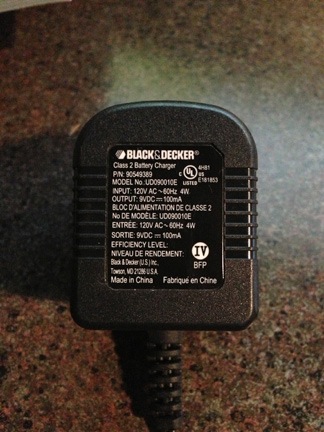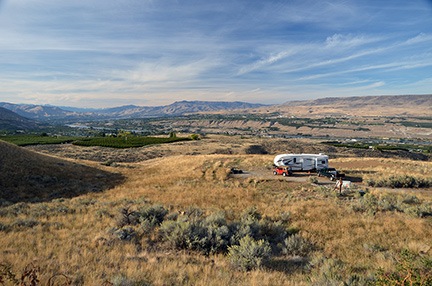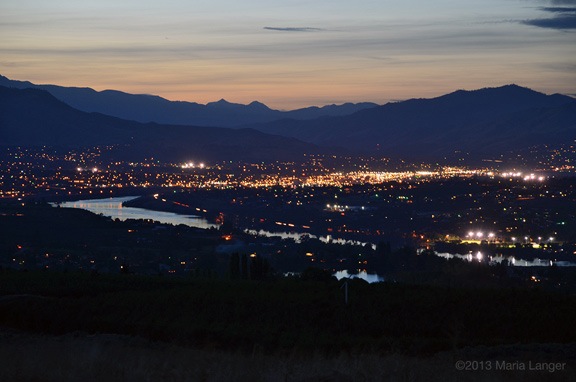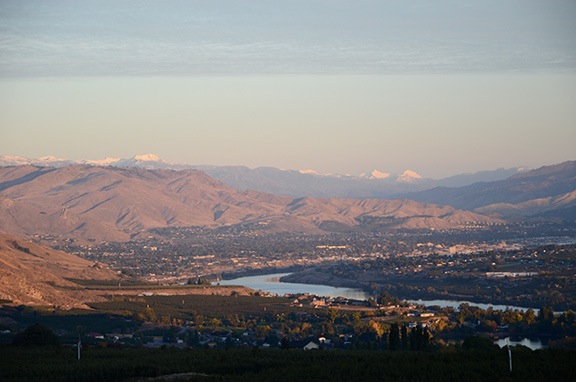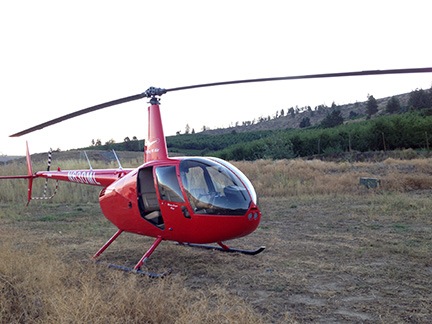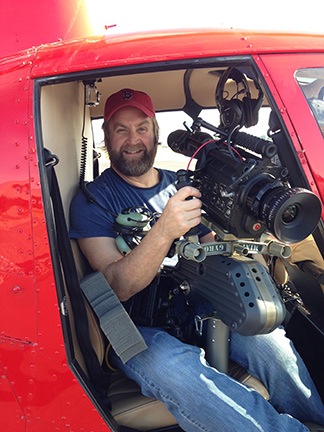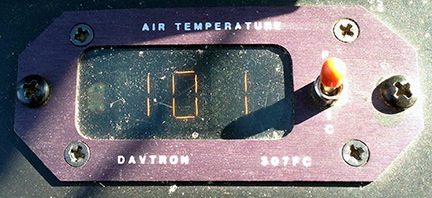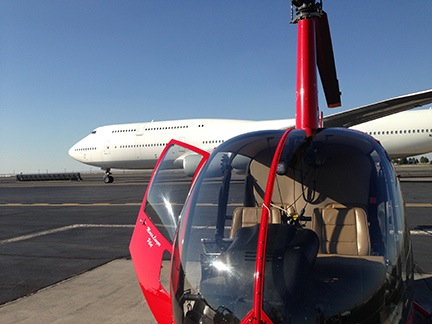Thanks for the monkey lamp. I’ll miss you.

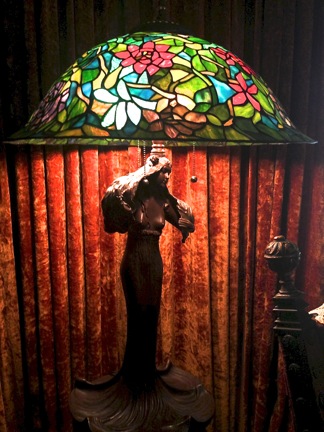
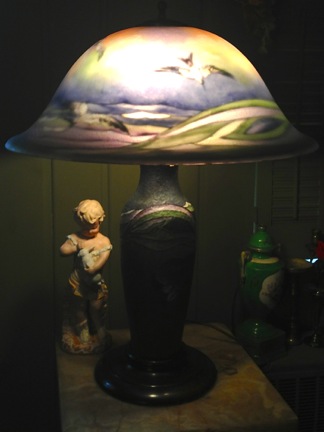




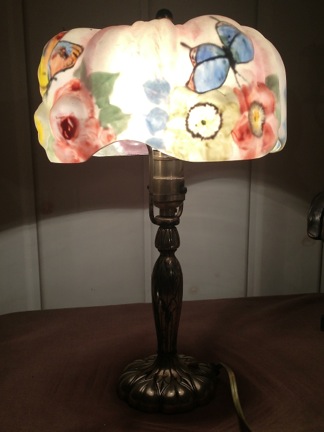 Just a few of your antique lamps. We lit them up and I photographed them to remember them forever.
Just a few of your antique lamps. We lit them up and I photographed them to remember them forever.
Dear Jackie,
I’d hoped to see you one last time, to say goodbye and give you some comfort in your final days — the kind of comfort you can only get when people who love you are near. But it was not meant to be. I got the phone call about your death on Monday morning, while driving back from the appointment that prevented me from coming sooner. Although I was sad that I missed you, I knew that you likely welcomed that final sleep. You were finally out of pain after years of deteriorating health and illness, able to rest easy.
Still, the plane tickets were bought and paid for and the time was scheduled on my calendar. My mom was already on her way, driving up from Florida. (She missed her chance to say goodbye by less than 24 hours.) Although you’d made it clear that you didn’t want a service, I knew we’d gather to lay your ashes to rest per your instructions. And then there was your house and all the things inside it — my mom and cousin Rosemary would have quite a chore ahead of them. So I came, of course, and even though I wasn’t able to say goodbye in person, I was able to say goodbye by revisiting my memories of you though the wonderful things you left behind in your home.
And what things! Yes, your house was a mess — but among the clutter were the amazing things you collected over your long career as an antique dealer. No one could imagine the treasures stuck in every corner of your house. I hope you don’t mind that I shared photos of your lamps and candlestick holders and all those VHS tapes with my friends on Facebook. I wanted to give them a glimpse of what we were experiencing as we went through the crazy, wonderful, chaotic clutter you left behind.
First were the lamps. You know how I loved your lamps! After Grandma left me her Jefferson lamp — which she’d bought from you years before — I came to your home to buy a similar lamp to go with it. You sold me another reverse-painted lamp, a Handel. I got so much pleasure out of them in the living room of my home, making sure to light them when company came. They were the first things I packed when I prepared to move out at the end of my marriage; it was vital to protect them from the desperate old woman who’d already begun cataloging my things, so eager to take my place in my home. Everyone in the family had a good laugh at her ignorance when she listed them as “Pairpoint Puffs” on an inventory my wasband submitted to his lawyer.
But although you’d shown me many reverse-painted lamps that day back in 1999, you didn’t show me all of them. Or any of the other styles that really didn’t interest me. One by one, my mom, Rosemary, and I lit them up to admire them. I took photos. I knew that they’d go to auction and I wanted to remember them all. So beautiful! Handel, Pairpoints, Tiffanys, and names I’ll never know. I was tickled when one of my Facebook friends suggested putting them for sale on Etsy, a craft web site. She had no idea that these were the real deal, worth thousands at auction. I’m sure they’ll make many collectors and art lovers happy — at least as happy as I am to have mine.
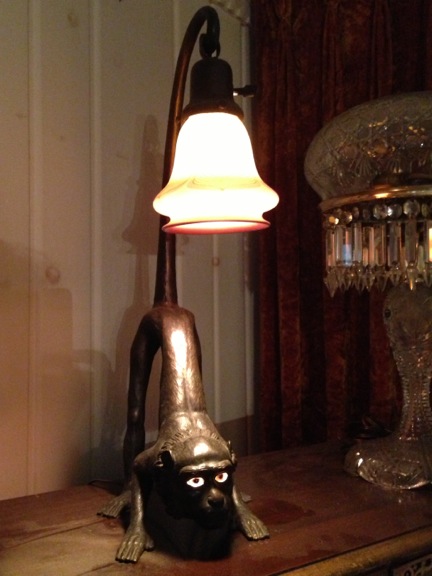 The monkey lamp. Yes, its eyes really do light up.
The monkey lamp. Yes, its eyes really do light up.
And yes, I finally got the monkey lamp. You know how much I admired it — how many times did I try to get you to sell it to me? Such an unusual piece in such an unusual house. It reminds me of you and of all the times my family visited you there.
Visiting you at that house when I was a kid was like a trip to a museum. Even though I didn’t really understand what I was seeing, it was all magical to me. So many wonderful things — most of which I wasn’t allowed to touch! Back in the early days, when Victor still lived there with you, you still had the shops in the basement and backyard. I remember walking through that basement shop with my arms obediently at my sides, just looking. Once, you let me pick something from a cabinet — it was a small portrait of Abe Lincoln decoupaged to a piece of wood. Do you know I found that little picture when I was packing last year? I still had it nearly 45 years after you gave it to me!
I remember those days well, especially the Christmas visits. You and Victor always did an amazing job decorating the house with a real Christmas tree that climbed up to the ceiling, covered with antique (of course!) ornaments. A fire was always going in the fireplace — a real treat for us because we didn’t have a fireplace at home — and you’d always make it extra special by tossing in some sort of crystals that turned the flames all different colors.
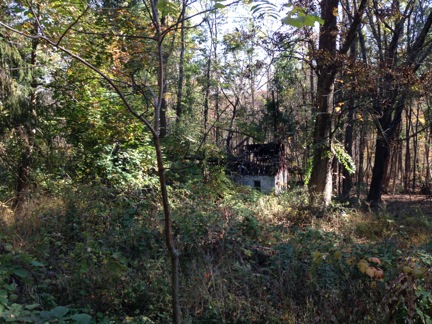 The backyard is nothing like I remember it.
The backyard is nothing like I remember it.
And the backyard — in those days it had a rough but well-trimmed lawn with concrete paths that sloped down to the shops in the backyard. But today the yard is a tangle of young trees, weeds, and brambles. The paths are hidden beneath the brush. The small shop is a pile of wood and the large shop is a mostly collapsed mess.
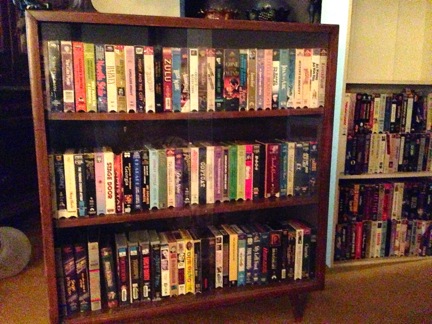 We found about 1,500 VHS tapes among your things. Why did you have so many? We’ll never know.
We found about 1,500 VHS tapes among your things. Why did you have so many? We’ll never know.
But this week, the house was dark with drawn curtains and shades. Even all those lamps couldn’t brighten it up. The air was musty — the same antique smell I remember from childhood, but intensified. We went through your things, organizing, gathering, and discarding while reminiscing about you. The candlestick holders filled your dining room table. The soapstone carvings filled another table in the living room. As I cleared shelves full of VHS tapes that you’d collected for reasons only you know — more than 1500 of them! — we filled those shelves with crystal and silver and carnival glass.We cleared your closets, giving your clothes — including so many pants and shirts that still had store tags on them — and linens to Goodwill. Why did you have so many ties? We’ll never know. And eyeglasses — I’d never seen you wear them, but they were all over the house. Now they’re in a bag, ready to donate to the Lions.
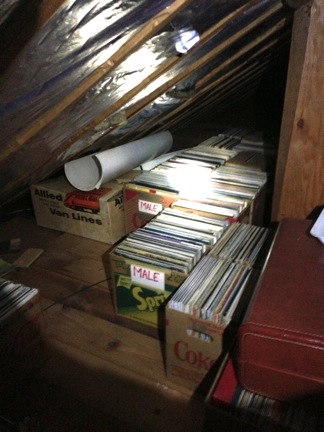 Every room of the house had boxes of record albums, but the attic crawlspaces were absolutely crammed with them.
Every room of the house had boxes of record albums, but the attic crawlspaces were absolutely crammed with them.
The record albums, stored in liquor boxes in every room of the house, were beyond my capabilities. We sent my brother in to handle those. Even he gave up after a while. I don’t know how many there are, but I wouldn’t be surprised if there were 5,000 of them. The boxes stretched into the darkness of the crawlspaces in your attic. We found a Craig’s List browser to take the VHS tapes for free; she came with her husband and a trailer. Those LPs, however, deserve better attention; a record dealer will be coming from New York to look at them on Monday and I hope he comes with a truck and helpers.
There were light bulbs in almost every drawer we opened — too many for even a lamp dealer to have on hand. And plastic bags — what was up with that? It looked to me as if you’d saved every plastic grocery bag you’d ever brought home and talked them into giving you bunches and bunches of brand new ones, too. Lots of paper towels and laundry soap — you must have gotten quite a deal on that stuff in the store to have been stocking up so much. More than once, the word “hoarder” came to mind, but although you saved a lot of things many people would have thrown away, I could never call you a hoarder.
I thought often during the week about our last few conversations on the phone. You’d heard from my mother all about my divorce ordeal, about the man I’d loved and trusted for more than half my life betraying me with lies and infidelity and trying to steal everything I’d worked so hard for my whole life. That’s when you confided in me about your own pain all those years ago, about Victor’s departure and some of the vindictive things he did to you. We had that in common: heartbreak. You understood my tears and tried to comfort me with words over the phone. I appreciated that.
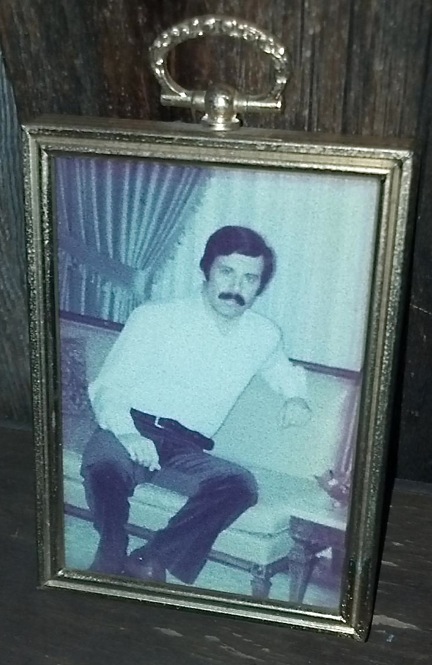
Jack DeGaetano circa 1975.
I wanted so badly to see you before you slipped into the final sleep. I wanted you to feel the love of family members at your life’s end. I wanted to comfort you, if I could. I’m sorry I was unable to do that. I hope you’ll forgive me.
The monkey lamp is your parting gift to me and I will treasure it always. I promise that it will occupy a place of honor in my new home, never sold or given away. And when guests come by and comment about its oddness and glowing eyes, I’ll tell them stories about you and your home and your wonderful things. It’ll help keep you alive in my memory forever.
Your loving goddaughter,
Maria

 This morning, I faced the challenge of finding the model number on a charger for my Black and Decker SmartDriver screwdriver — AKA, my girlie drill. The charger — which also doubles as a base for holding screwdriver heads — was zapped by a power surge and I needed to replace it.
This morning, I faced the challenge of finding the model number on a charger for my Black and Decker SmartDriver screwdriver — AKA, my girlie drill. The charger — which also doubles as a base for holding screwdriver heads — was zapped by a power surge and I needed to replace it.